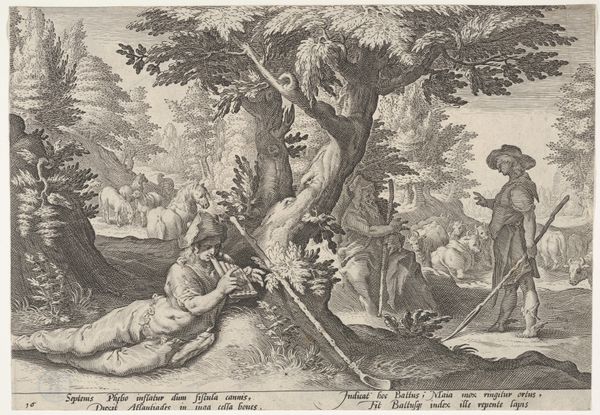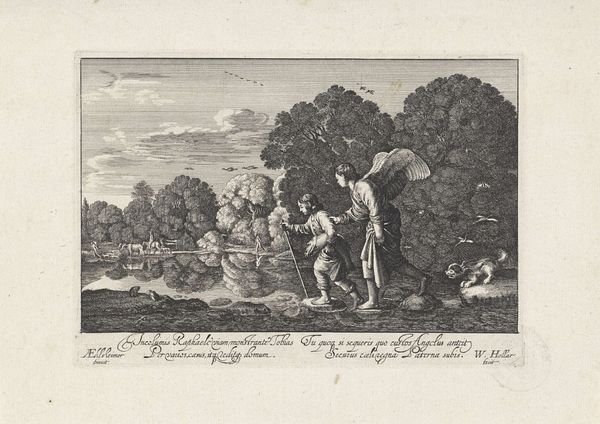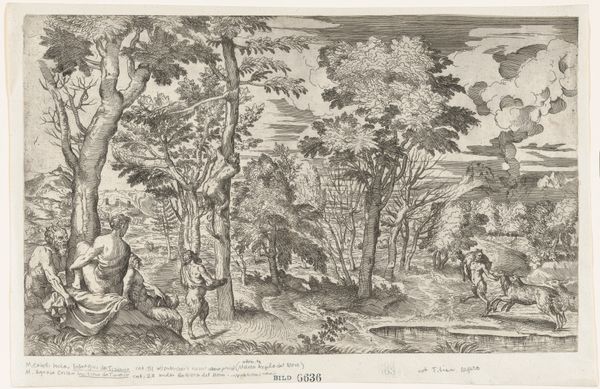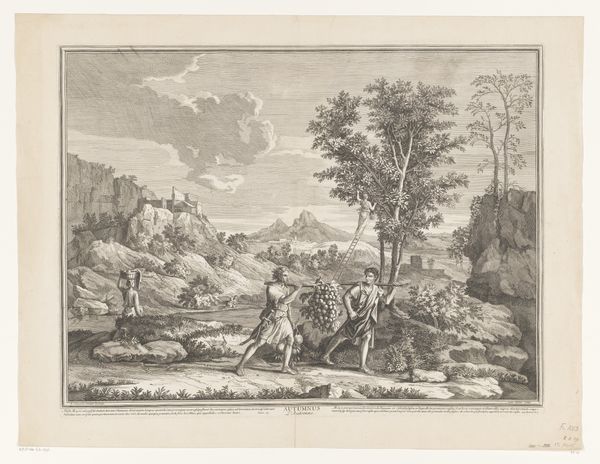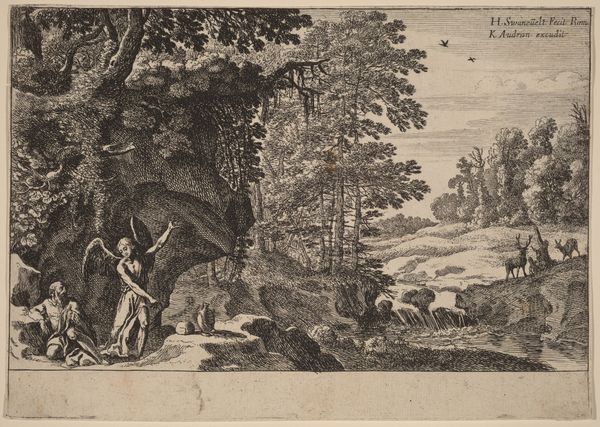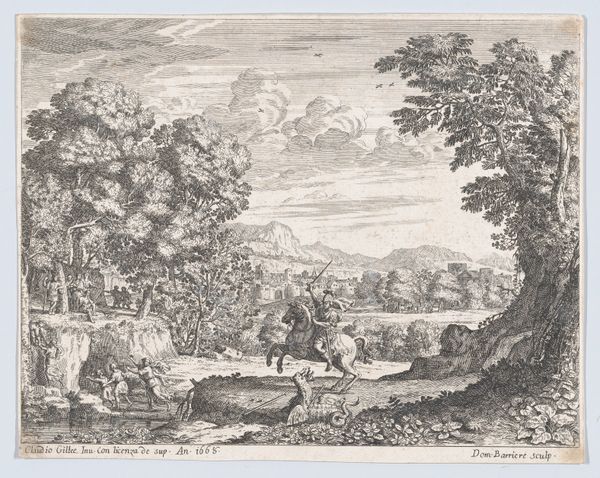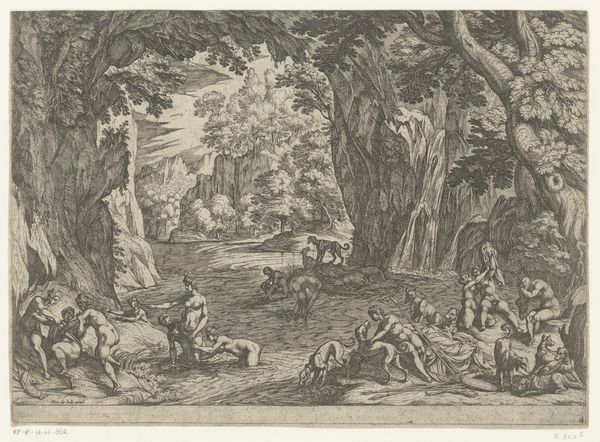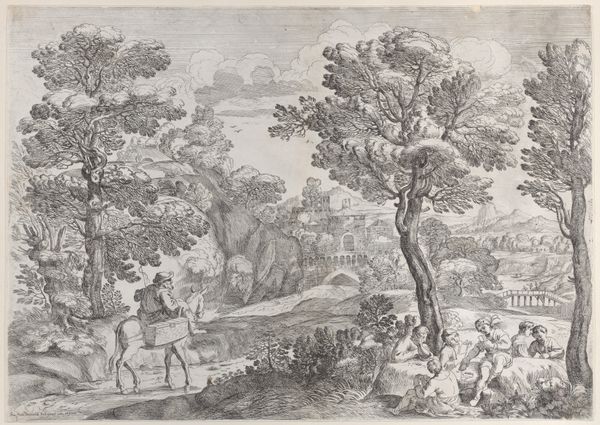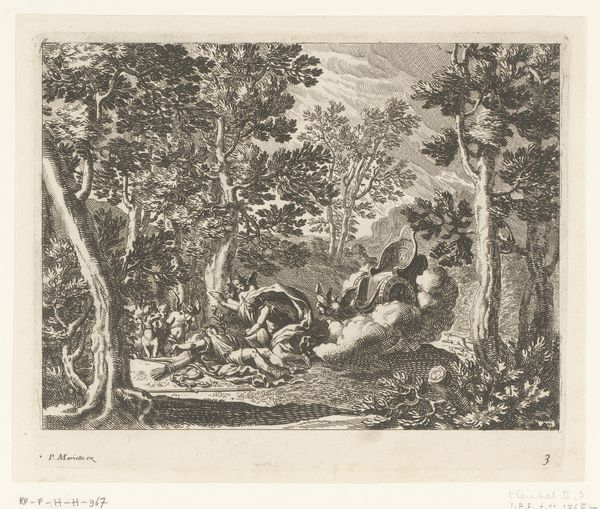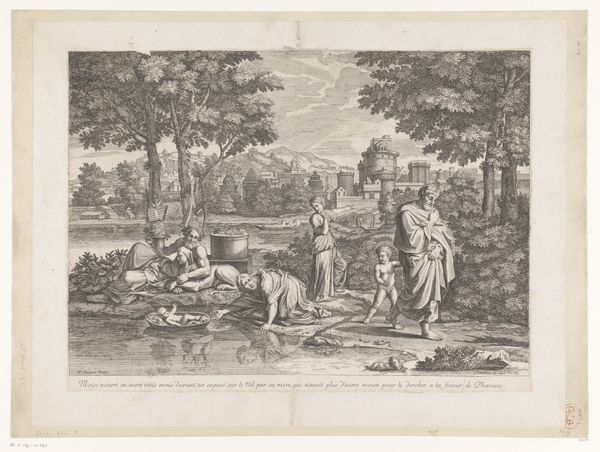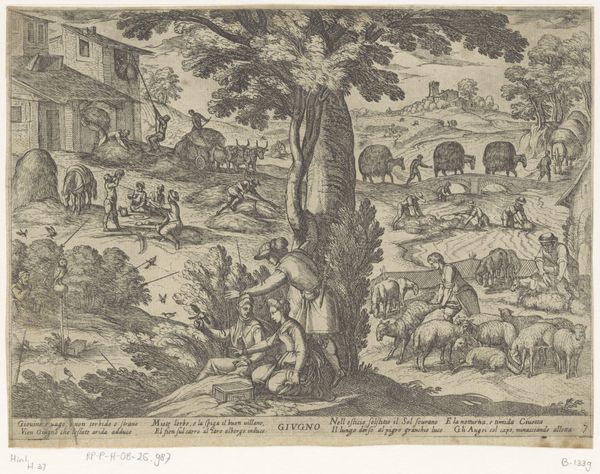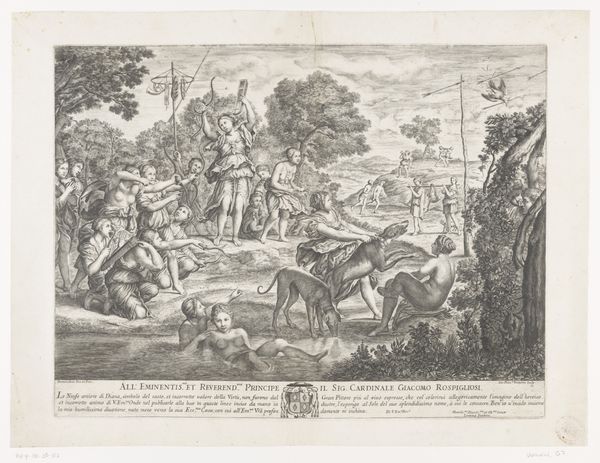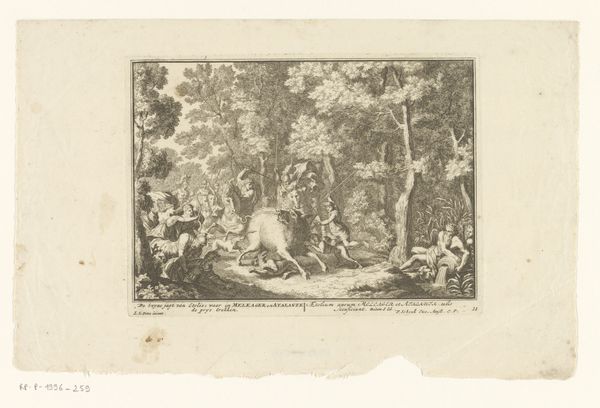
Twee theater scènes met figuren in een bosrijk landschap 1721 - 1771
0:00
0:00
jeremiaswachsmuth
Rijksmuseum
engraving
#
comic strip sketch
#
quirky sketch
#
baroque
#
pencil sketch
#
old engraving style
#
landscape
#
personal sketchbook
#
sketchwork
#
forest
#
pen-ink sketch
#
sketchbook drawing
#
genre-painting
#
history-painting
#
storyboard and sketchbook work
#
sketchbook art
#
engraving
Dimensions: height 175 mm, width 243 mm
Copyright: Rijks Museum: Open Domain
Editor: Here we have "Twee theater scènes met figuren in een bosrijk landschap," or Two Theatre Scenes with Figures in a Wooded Landscape, an engraving created sometime between 1721 and 1771 by Jeremias Wachsmuth. There’s something whimsical about this piece, a bit like storybook illustrations, but also formal. What stands out to you about this work? Curator: The division of the frame into distinct narrative registers immediately draws my attention. It begs the question: who had the privilege of experiencing theatre, and how did representations of social hierarchies play out both on stage and in the viewing public’s perception? Note the figure of ‘Satire’ alongside ‘Moron’. What could such figures represent at the time this work was created? How do the acts, scenes, characters and theatrical landscapes of the two works depicted contribute to broader social commentaries of the period? Editor: That’s a good point. I didn’t immediately think about social hierarchies. Do you think the “wooded landscape” setting also carries meaning? Curator: Absolutely. The ‘natural’ setting often serves as a space where societal norms can be explored, challenged, or subverted. Consider, what kind of performances might have taken place in such spaces? Who might have been excluded from participating in or viewing these performances, and why? What philosophical underpinnings could be fueling the intent and purpose of this period theatrical presentations? Editor: So, by examining these figures and landscapes within their historical and social context, we can uncover a deeper understanding of power dynamics at play in 18th-century society? Curator: Precisely! By engaging with the artwork as a historical document, we begin to see beyond the aesthetic surface and comprehend its engagement within critical discourse. Editor: I'm walking away from this with a deeper awareness. This artwork it not just a whimsical illustration. Curator: Indeed. It's a starting point for critical inquiry, urging us to consider whose stories are being told and for whom.
Comments
No comments
Be the first to comment and join the conversation on the ultimate creative platform.
